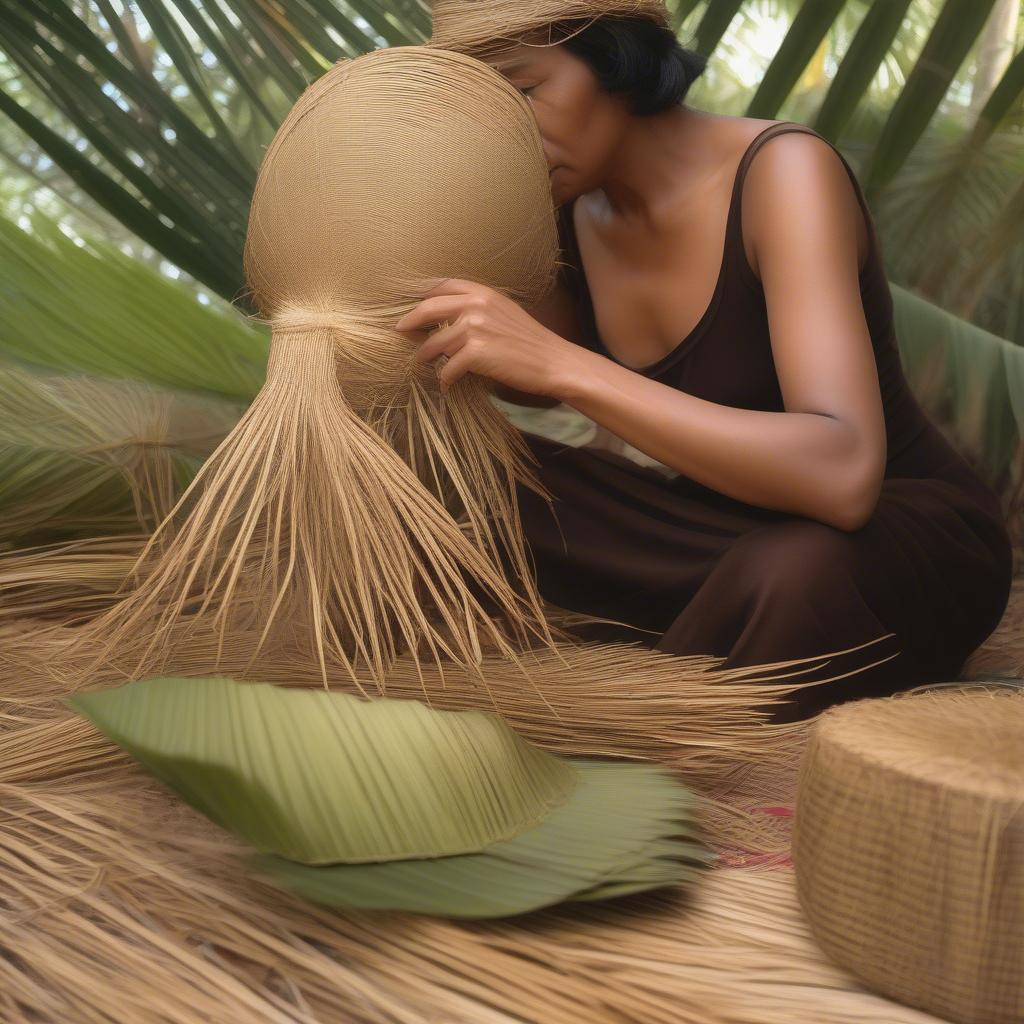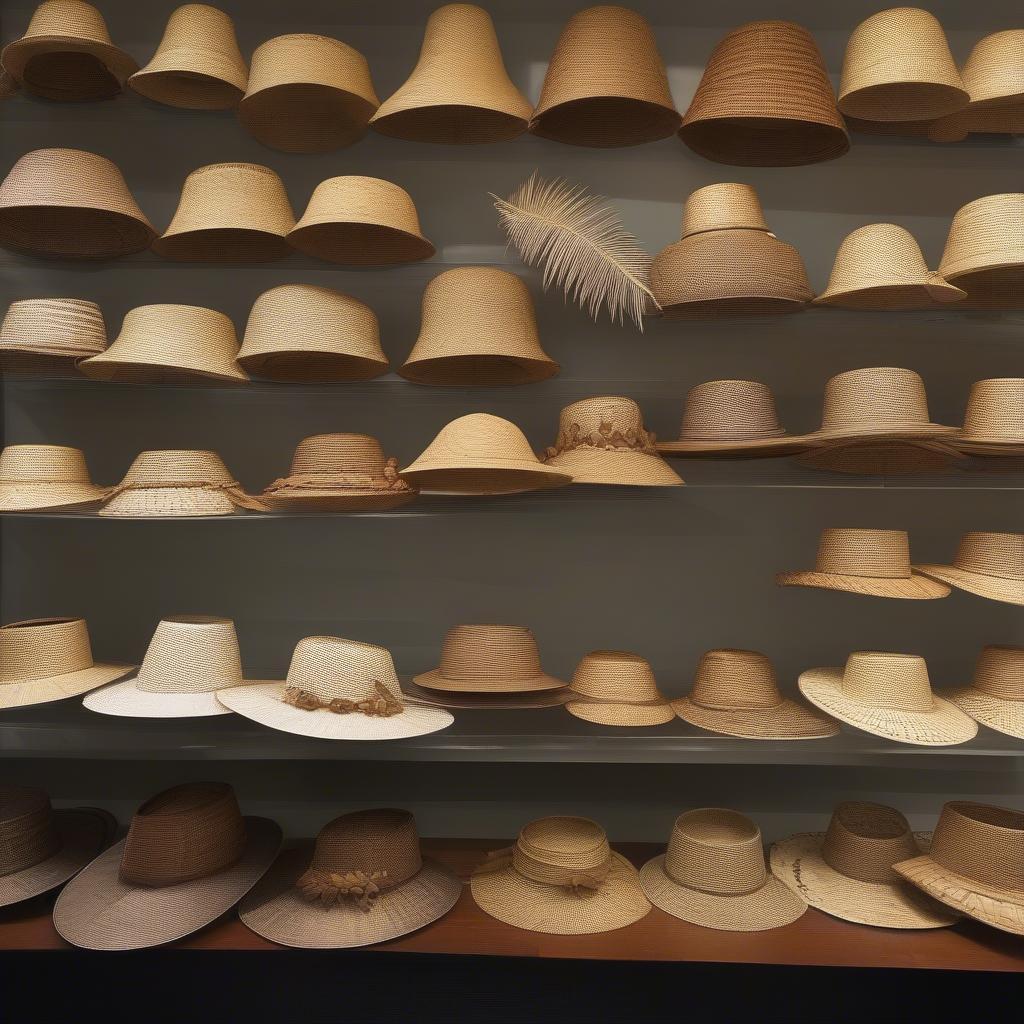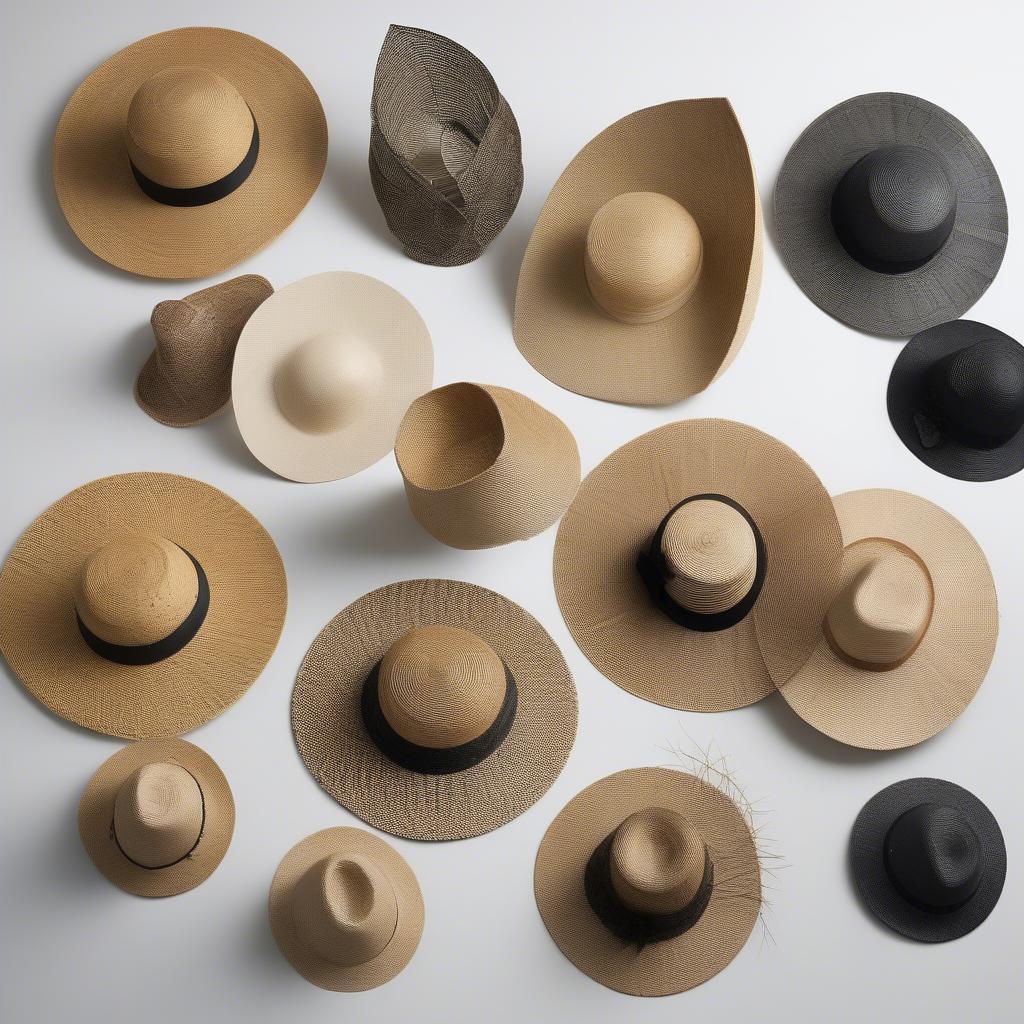Weave Hat
The Art of Coconut Leaf Hat Weaving
Coconut Leaf Hat Weaving is a time-honored tradition, transforming simple palm leaves into practical and stylish headwear. From the intricate patterns to the sustainable nature of the craft, discover the beauty and cultural significance behind these iconic hats.  A woman skillfully weaving a coconut leaf hat, demonstrating the intricate hand movements and traditional techniques involved.
A woman skillfully weaving a coconut leaf hat, demonstrating the intricate hand movements and traditional techniques involved.
A Deep Dive into Coconut Leaf Hat Weaving Techniques
The process of coconut leaf hat weaving is a testament to human ingenuity and patience. It involves several key stages, from preparing the leaves to the final shaping of the hat. Firstly, mature coconut leaves are carefully selected and dried to achieve the desired pliability. These dried leaves are then meticulously woven together, often using traditional patterns passed down through generations. The tightness of the weave determines the hat’s durability and its ability to protect from the sun and rain. This meticulous process often takes hours, requiring a skilled hand and a keen eye for detail.
how to weave a palm hat provides a detailed look at the various techniques involved in palm hat weaving. Many of these techniques also apply to coconut leaf hats.
Understanding the Cultural Significance of Coconut Leaf Hats
Beyond their practical function, coconut leaf hats hold deep cultural significance in many communities. They are often seen as symbols of protection, prosperity, and connection to nature. In some cultures, specific patterns woven into the hats represent different social statuses or family lineages. These hats are not merely accessories; they are tangible expressions of cultural identity and heritage.  A vibrant display of various coconut leaf hats, showcasing different shapes, sizes, and weaving patterns.
A vibrant display of various coconut leaf hats, showcasing different shapes, sizes, and weaving patterns.
From Leaf to Hat: A Step-by-Step Guide
The transformation from coconut leaf to finished hat is a fascinating process. Let’s break down the key steps:
- Leaf Selection and Preparation: Choose mature, undamaged coconut leaves. Dry them thoroughly until pliable.
- Splitting and Shaping: Split the leaves into thin strips and smooth them out to create uniform strands.
- Weaving the Brim: Begin weaving the brim of the hat using a circular weaving technique.
- Shaping the Crown: Gradually shape the crown of the hat by adjusting the weaving pattern.
- Finishing Touches: Trim excess leaves and add decorative elements, if desired.
how to weave coconut leaves hat with open on top explains a particular technique for creating a hat with an open top, adding a unique twist to the traditional design.
Exploring the Different Types of Coconut Leaf Hats
The world of coconut leaf hats extends beyond the classic conical shape. There is a wide array of styles and designs, each reflecting the unique traditions of the region where it originated. From wide-brimmed hats designed for sun protection to intricately woven hats for ceremonial occasions, the possibilities are endless. Some hats feature unique embellishments, such as colorful ribbons or beads, adding a touch of personal flair.
“The diversity in coconut leaf hat weaving is truly remarkable,” says renowned artisan, Maria Hernandez. “Each hat tells a story, reflecting the creativity and cultural heritage of its maker.”
Maintaining and Preserving Your Coconut Leaf Hat
Proper care is essential to prolong the life of your coconut leaf hat. Avoid exposing it to excessive moisture or direct sunlight for extended periods. Store it in a cool, dry place to prevent mold or mildew. Gentle cleaning with a soft brush can help remove dust and debris.
coconut hat weaving offers further insights into the craft and its enduring appeal.
The Future of Coconut Leaf Hat Weaving
In a world increasingly dominated by mass-produced goods, the art of coconut leaf hat weaving represents a connection to tradition and sustainable practices. As consumers become more conscious of the environmental impact of their choices, handcrafted items like coconut leaf hats are gaining renewed appreciation. This craft provides a sustainable livelihood for many artisans, preserving cultural heritage while minimizing environmental footprint.
“The resurgence of interest in handcrafted goods is encouraging,” shares cultural anthropologist, Dr. James O’Malley. “It signifies a shift towards valuing authenticity and sustainability.”  Contemporary coconut leaf hats with stylish designs and modern interpretations of traditional weaving patterns.
Contemporary coconut leaf hats with stylish designs and modern interpretations of traditional weaving patterns.
loose weave palm leaf hat provides another interesting perspective on weaving techniques, especially for creating airy and lightweight hats.
In conclusion, coconut leaf hat weaving is more than just a craft; it’s an art form that embodies cultural heritage, sustainability, and human ingenuity. From the selection of the leaves to the final weave, each step is imbued with tradition and skill. By appreciating the artistry and cultural significance of these hats, we contribute to the preservation of a valuable craft.
When you need assistance, please contact Hotline: +84 388 951 999, address: Hanoi, Vietnam or Tech Avenue, Suite 12, San Francisco, CA 94105, USA. We have a 24/7 customer service team.
